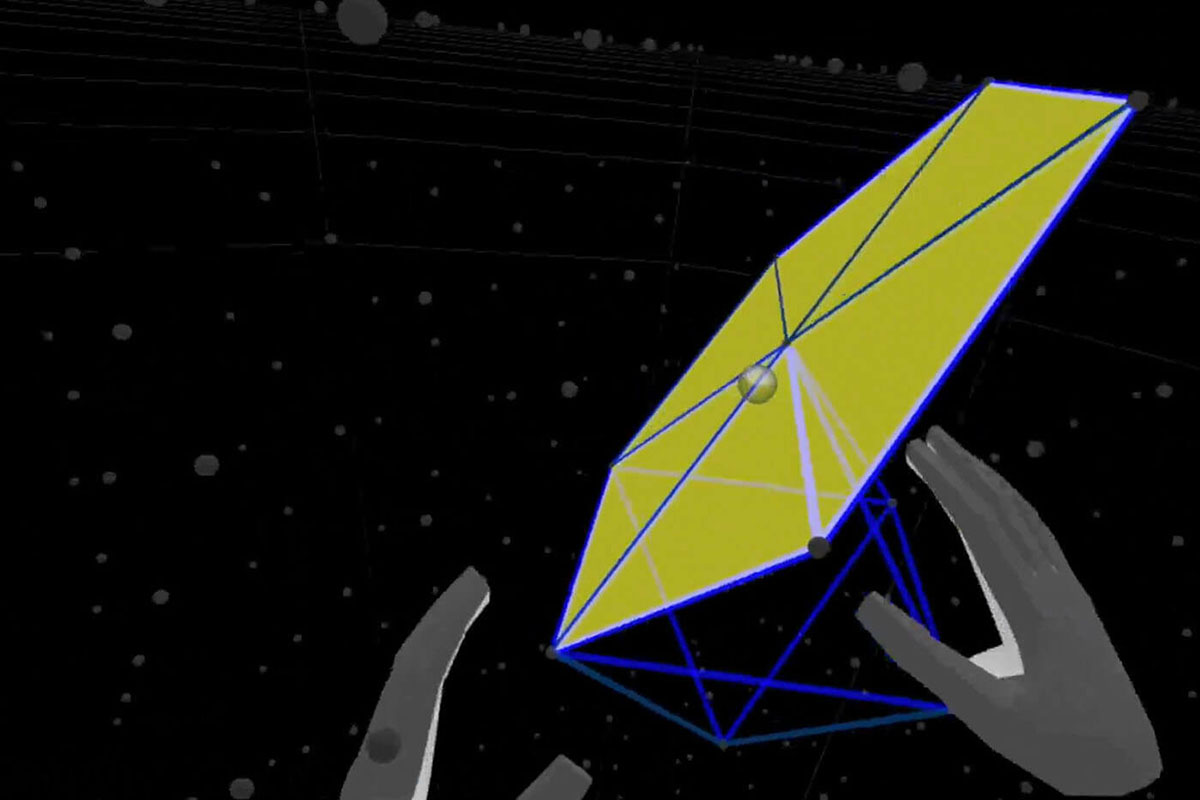
UMaine study analyzes how virtual and augmented reality can be used to teach mathematics concepts
New research from the University of Maine College of Education and Human Development’s School of Learning and Teaching shows how emerging technologies such as virtual and augmented reality are creating novel ways of exploring mathematical ideas.
The study, published in Digital Experiences in Mathematics Education, was conducted by Justin Dimmel, assistant professor of mathematics education and instructional technology, Eric Pandiscio, associate professor of mathematics education, and Camden Bock, a doctoral candidate in STEM education.
It examined the idea of spatial inscriptions — that is, math concepts that are drawn or inscribed in real or rendered spaces. Traditionally, mathematicians, teachers and students have explored these ideas in two-dimensions, on surfaces such as slate, notebooks or chalkboards. The advent of virtual reality and other digital tools for learning and teaching has created new opportunities to explore these inscriptions in three-dimensions.
Dimmel, Pandiscio and Bock analyzed how separate groups of college students and high school math teachers experienced two virtual-reality environments created by graduate and undergraduate research assistants in the Immersive Mathematics in Rendered Environments (IMRE) Lab, located in Shibles Hall on the UMaine campus. They paid special attention to how “participants moved their bodies, used their gaze, and transformed the spatial canvases by making inscriptions.”
The first environment — the line and sphere environment — was a virtual canvas for drawing points, lines and spheres, which participants could manipulate using their hands. The researchers envisioned an environment that would allow learners to construct spatial figures from the intersections of planes and spheres, analogous to two-dimensional circle and line constructions that students in a geometry class, for example, would make with a compass and straight-edge. This iteration of the line and sphere environment was a start toward that goal, as it provided a spatial compass tool with which immersed learners could inscribe and transform spheres.
The second environment — LatticeLand — was a complement to the line and sphere environment designed to be the spatial equivalent of a geoboard. Participants were able to manipulate the environment using their hands, but instead of simple lines and spheres, they were able to create lattice polygons or polyhedrons: Two- or three-dimensional figures whose sides are straight and whose corners (or vertices) are points on a 10x10x10 square grid.
Based on the experiences of study participants, the researchers found that the virtual environments created new and unique educational opportunities. For example, in the line and sphere environment, “participants looked along lines and from within spheres,” rather than being constrained to viewing inscriptions on a two-dimensional surface.
One teacher participant commented about the LatticeLand environment: “You have to think very differently. I’m used to doing this on a white board in my classroom, and this is very different. The 3D changes how I think about the shapes.”
The study was conducted at the IMRE Lab with commercially available technology, including VR head-mounted displays, which in recent years have become more readily available.
“Our work shows what is possible with off-the-shelf hardware and software that was developed in an academic research lab,” Dimmel, Pandiscio and Bock conclude, adding that the study shows “the potential to reconfigure how mathematics can be experienced.”
The article, “The Geometry of Movement: Encounters with Spatial Inscriptions for Making and Exploring Mathematical Figures” is available online.
Dimmel and Bock also created a video demonstrating the IMRE Lab’s line and sphere environment, available on the College of Education and Human Development’s YouTube channel.
Contact: Casey Kelly, casey.kelly@maine.edu
